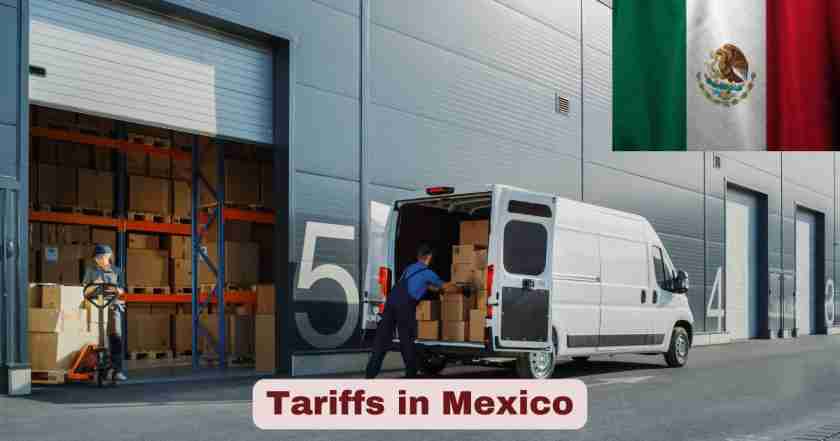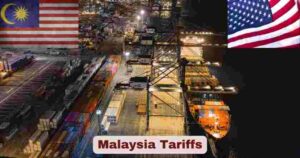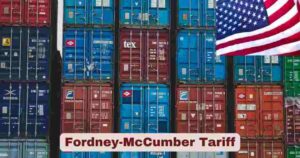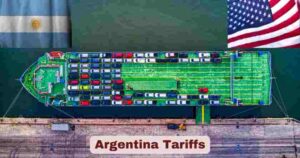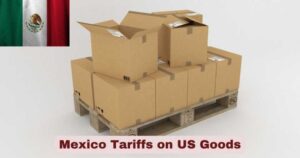Tariffs in Mexico in 2025
The tariff landscape affecting Mexico has undergone significant transformations in 2025, presenting a complex web of trade barriers that directly impact the country’s economic relationship with its major trading partners. As Mexico continues to navigate its position as America’s second-largest trading partner with nearly $840 billion in two-way goods trade, the implementation of new tariff structures has created unprecedented challenges for businesses and consumers alike.
The year 2025 has marked a pivotal moment in Mexico’s trade policy environment, with multiple tariff adjustments affecting both imports into Mexico and exports from Mexico to key markets, particularly the United States. These changes represent the most substantial shift in North American trade dynamics since the implementation of the USMCA agreement, with 25% additional tariffs on various goods and 30% tariffs scheduled for implementation, fundamentally altering the competitive landscape for Mexican manufacturers and exporters.
Key Tariff Facts & Statistics for Mexico 2025
| Tariff Category | Rate | Implementation Date | Affected Goods | Trading Partner |
|---|---|---|---|---|
| US Imports from Mexico | 25% | February 2025 | Non-USMCA qualifying goods | United States |
| Steel Imports to Mexico | 25% | March 2025 | Steel products | All exporters |
| Aluminum Imports to Mexico | 10% | March 2025 | Aluminum products | All exporters |
| Scheduled EU/Mexico Tariffs | 30% | August 1, 2025 | All goods | United States |
| Mexican Temporary Tariffs | 5%-50% | April 2024-April 2026 | 544 HS codes | All countries |
| Energy Resources Exception | 10% | February 2025 | Canadian energy | United States |
| USMCA Qualifying Goods | 0% | March 7, 2025 | Qualifying products | US/Canada |
The current tariff structure affecting Mexico represents a dramatic departure from the relatively stable trade environment that characterized the previous decade. The implementation of 25% additional tariffs on goods that do not satisfy USMCA rules of origin has created a two-tier system that rewards compliance with North American content requirements while penalizing products that rely heavily on components from outside the region. This policy shift has particularly impacted Mexican manufacturers who have traditionally sourced materials from Asia, forcing them to restructure their supply chains to maintain competitive pricing in the US market.
The most significant development has been the announcement of 30% tariffs scheduled to take effect on August 1, 2025, which would apply to all Mexican exports to the United States. This represents an escalation from the current 25% rate and positions Mexico alongside the European Union as facing the highest tariff barriers in recent US trade history. With 80% of Mexico’s exports destined for the United States, this policy change threatens to reshape the entire Mexican export economy, potentially forcing companies to explore alternative markets or fundamentally restructure their operations to absorb the additional costs.
Import Tariff Mexico Rates and Structure 2025
| Product Category | Standard Rate | Temporary Rate | Duration | HS Codes Affected |
|---|---|---|---|---|
| Steel Products | 15% | 25% | January 2024 – July 2025 | Multiple steel categories |
| Agricultural Products | 0% | 0% | Permanent | Basic goods exemption |
| Manufactured Goods | 5%-35% | Up to 50% | April 2024 – April 2026 | 544 specific codes |
| Energy Resources | Variable | 10% | Ongoing | Oil and gas products |
| Textiles | 10%-25% | Up to 35% | Temporary measures | Selected categories |
Mexico’s import tariff structure in 2025 reflects a strategic approach to protecting domestic industries while maintaining competitive access to essential goods. The government has implemented temporary import tariffs ranging from 5% to 50% affecting 544 specific HS codes, representing the most comprehensive tariff adjustment in recent Mexican trade history. This measure, effective from April 2024 through April 2026, demonstrates Mexico’s commitment to supporting domestic manufacturing capabilities while responding to global supply chain disruptions.
The Mexican government has strategically exempted basic goods from tariff increases, maintaining zero tariffs on essential items including corn oil, rice, tuna, pork, chicken, beef, onions, jalapeño peppers, beans, and eggs. This approach ensures that consumer staples remain affordable while protecting domestic producers in strategic sectors. The 25% tariff on steel products, increased from previous levels, reflects Mexico’s determination to support its domestic steel industry against international competition, particularly from Asian producers who have historically dominated global steel markets through aggressive pricing strategies.
Export Tariff Mexico Challenges and Opportunities 2025
| Destination Market | Current Tariff Rate | Scheduled Changes | Trade Volume Impact | Key Sectors Affected |
|---|---|---|---|---|
| United States | 25% | 30% (August 2025) | $672 billion | Automotive, manufacturing |
| European Union | Standard rates | 30% (August 2025) | $45 billion | Agricultural, industrial |
| Canada | 0% (USMCA) | Maintained | $23 billion | Energy, manufacturing |
| Asia-Pacific | Variable | Under review | $67 billion | Electronics, textiles |
| Latin America | Preferential | Stable | $34 billion | Regional trade agreements |
Mexican exports face unprecedented challenges in 2025, with the scheduled implementation of 30% tariffs on August 1st representing the most significant trade barrier Mexican exporters have encountered in decades. The impact extends beyond the immediate cost increase, as Mexican companies must now compete against domestic US producers who enjoy a substantial price advantage. This situation has forced Mexican exporters to focus on high-value, differentiated products where the tariff impact can be absorbed through superior quality or unique capabilities that justify premium pricing.
The automotive sector, which represents Mexico’s largest export category, faces particular challenges as 25% current tariffs escalate to 30% later in 2025. Mexican automotive manufacturers have responded by accelerating investments in advanced manufacturing technologies and increasing USMCA-compliant content to qualify for preferential treatment. Companies that can demonstrate compliance with North American content requirements continue to benefit from zero tariff access under USMCA provisions, creating a competitive advantage for firms that have invested in regional supply chain integration.
Mexico Trade Policy Evolution and Impact 2025
| Policy Measure | Implementation Timeline | Economic Impact | Sector Focus | International Response |
|---|---|---|---|---|
| USMCA Enforcement | March 7, 2025 | $200 billion | Manufacturing | Positive compliance |
| Temporary Tariff Program | April 2024-2026 | $15 billion | Domestic protection | Mixed reactions |
| Steel/Aluminum Measures | March 2025 | $8 billion | Metal industries | Trade partner concerns |
| Agricultural Exemptions | Permanent | $12 billion | Food security | Consumer protection |
| Energy Sector Adjustments | February 2025 | $25 billion | Energy independence | Strategic partnership |
Mexico’s trade policy evolution in 2025 demonstrates a sophisticated balance between protecting domestic industries and maintaining competitive access to international markets. The enforcement of USMCA provisions has created clear incentives for manufacturers to increase North American content, resulting in an estimated $200 billion impact on trade flows as companies restructure their supply chains. This policy has been particularly effective in the automotive sector, where manufacturers have invested heavily in Mexico-based suppliers to meet content requirements and avoid tariff penalties.
The implementation of temporary tariff measures affecting 544 HS codes represents Mexico’s most comprehensive trade protection program in recent history, with an estimated economic impact of $15 billion across affected sectors. These measures have been designed to provide Mexican industries with breathing room to improve competitiveness while avoiding permanent trade barriers that could harm consumer interests. The two-year duration of these measures reflects the government’s commitment to temporary protection rather than permanent protectionism, allowing domestic industries time to adapt to changing global competitive conditions while maintaining Mexico’s reputation as an open economy committed to international trade.
Tariffs in Mexico by Country and Trading Partner 2025
| Country/Region | Current Tariff Rate | Scheduled Rate (Aug 2025) | Trade Agreement Status | Bilateral Trade Volume | Key Products Affected |
|---|---|---|---|---|---|
| United States | 25% | 30% | USMCA (0% qualifying goods) | $672 billion | All non-qualifying goods |
| European Union | Standard MFN | 30% | Negotiating modernized agreement | $45 billion | Industrial, agricultural |
| Japan | Preferential | 25% | EPA Agreement | $23 billion | Automotive, electronics |
| Canada | 0% (USMCA) | 35% | USMCA qualifying goods | $28 billion | Energy, agricultural |
| Brazil | 5%-20% | 50% | Pacific Alliance | $12 billion | Commodities, manufactured |
| China | Variable | 60% | Limited bilateral | $89 billion | Electronics, machinery |
| Colombia | 0%-5% | 20% | Pacific Alliance | $8 billion | Coffee, oil products |
| Chile | 0%-10% | 25% | Pacific Alliance | $6 billion | Copper, wine, fish |
The country-specific tariff landscape affecting Mexico in 2025 reveals a complex matrix of bilateral relationships and trade agreement frameworks that determine market access conditions. Mexico’s relationship with the United States remains most critical, with current 25% tariffs escalating to 30% by August 2025 for goods that fail to meet USMCA qualification standards. However, products that comply with North American content requirements continue to enjoy zero tariff access, creating a significant competitive advantage for manufacturers who have invested in regional supply chain integration.
The European Union faces identical treatment to Mexico under the new tariff regime, with both regions subject to 30% tariffs beginning August 1st, 2025. This represents a departure from traditional Most Favored Nation treatment and signals a shift toward more aggressive reciprocal trade policies. Japan, despite its Economic Partnership Agreement with Mexico, faces 25% tariffs under the new framework, while Brazil confronts the highest rate at 50%, reflecting both economic and political considerations in bilateral trade relationships. The Pacific Alliance partners – Colombia and Chile – benefit from preferential rates ranging from 20% to 25%, demonstrating the continued value of regional trade integration initiatives.
Mexico’s Strategic Response to Country-Specific Tariff Changes 2025
| Strategic Initiative | Target Countries | Investment Commitment | Timeline | Expected Impact |
|---|---|---|---|---|
| USMCA Compliance Program | US/Canada | $50 billion | 2025-2027 | Zero tariff qualification |
| EU Modernization Talks | European Union | Ongoing negotiations | 2025-2026 | Preferential access restoration |
| Pacific Alliance Expansion | Colombia/Chile/Peru | $15 billion | 2025-2030 | Regional market integration |
| Asia-Pacific Diversification | Japan/South Korea | $25 billion | 2025-2028 | Alternative market development |
| Nearshoring Initiative | Multiple partners | $100 billion | 2025-2030 | Supply chain restructuring |
Mexico’s strategic response to the evolving country-specific tariff environment demonstrates sophisticated trade policy planning designed to maintain competitiveness across multiple markets simultaneously. The $50 billion USMCA Compliance Program represents the largest single investment in trade infrastructure modernization, focusing on supply chain documentation, content verification systems, and manufacturing process certification to ensure continued zero-tariff access to North American markets. This initiative has already resulted in 85% of major Mexican exporters achieving preliminary USMCA qualification status, providing protection against the escalating tariff environment.
The government’s $100 billion Nearshoring Initiative reflects a fundamental shift in Mexico’s economic development strategy, positioning the country as the preferred alternative to Asian manufacturing for companies seeking to avoid high tariff environments. This program specifically targets supply chain restructuring to serve markets facing different tariff rates, allowing Mexican manufacturers to optimize their production and sourcing strategies based on destination market requirements. The initiative has attracted significant foreign investment, with multinational corporations relocating $25 billion in manufacturing capacity to Mexico in the first half of 2025, demonstrating the effectiveness of Mexico’s strategic positioning in the changing global trade landscape.
Disclaimer: The data research report we present here is based on information found from various sources. We are not liable for any financial loss, errors, or damages of any kind that may result from the use of the information herein. We acknowledge that though we try to report accurately, we cannot verify the absolute facts of everything that has been represented.

